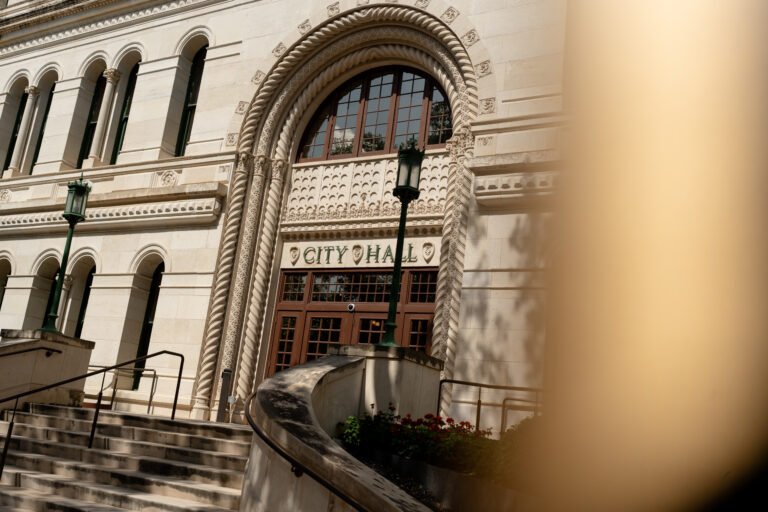San Antonio Common Council on Thursday elected 7-3 to change the city’s indicator code and permit an electronic signboards pilot job partially of San Antonio.
The choice follows virtually 3 years of conversations amongst participants of the council, city team, various other stakeholders and the Denver-based OutFront Media, which brought the principle to San Antonio in 2022.
With authorization from council, 10 revolving and brilliantly lit indications like those seen in New york city City’s Times Square might be mounted on frameworks in marked components of San Antonio beginning later on this year.
The modification to the regulation brings a single financing of $1 million for public arts and an approximated $500,000 a year in income sharing for the city.

The two-year pilot job will certainly permit the electronic signboards in 8 locations of the city:
- UTSA District
- Downtown West District
- Downtown East District
- Downtown South District
- Alamodome East District
- Port San Antonio
- Brooks
- Toyota Field
The Blue Celebrity Area was at first taken into consideration, after that later on gotten rid of from the checklist at the demand of stakeholders in the area.
The job will certainly be assisted by a collection of demands in the regulation, which details particular standards for the type of material that shows up on signboards and the size of time the indications will certainly be running.
The indications can not be mounted in position where they can be watched from the San Antonio River Stroll, according to the standards, and could not increase on any kind of structure that is marked historical.
Specific places will certainly be accepted via an allowing procedure, and all signs in historical areas would certainly go through testimonial by the Historical and Style Evaluation Compensation and the city’s Workplace of Historic Conservation.
Of the 10 indications allowed in marked locations of the city, 2 will certainly get on city building, and therefore, have to undergo an ask for proposition procedure. Those on personal property will certainly be mounted and run under agreement with the structure proprietors. The screen dimension can not surpass 25% of a structure’s outside.
Throughout the pilot, which begins in September, 10% of each signboard’s advertisement income would certainly most likely to the city, which will certainly utilize the funds to sustain arts programs. The indications additionally might be utilized by the city 20% of the moment for public messages and to show neighborhood art.
In enhancement to 5 stakeholder conferences throughout which the proposition existed, the city has actually held 4 public input sessions and fielded a study for area comments on the recommended program.
” I belonged to the job pressure … for the indicator code and when this existed to the job pressure, it failed,” stated Patti Zaiontz, a previous head of state of the Preservation Culture of San Antonio, which has actually opposed the indications.
At the very least 7 individuals and reps from the Preservation Culture talked against the proposition at the council conference, challenging exactly how they really felt the signs might interfere with the historical beauty of the city.
Kathleen Trenchard called it a Trojan equine. “What we have actually acquired below in San Antonio is a gem,” she stated. “Do not allow the carpetbaggers ruin it for sustaining the arts or anything else they can acquire for our eyeballs.”
Proponents of the signboards indicate their ability to include light and raise public security in some components of community, and for offering a system for the arts. Comparable programs exist in Denver, Atlanta and West Hollywood, Calif.
Representing OutFront Media, David Ehrlich stated the system will certainly drive cash right into the arts.
” San Antonio is an outstanding city– I have actually been boiling down below for 3 years, and you do have fish stories to inform,” he stated. “This program, with the displays– indeed, it will certainly be displays– yet there’s a substantial payment to art, and art constantly requires assistance from cities.”
District 4 Councilman Edward Mungia stated he particularly suched as that the program would certainly offer direct exposure and chance for senior high school musicians from his area.
However Area 9 Councilman John Nerve stated that while he sustains the job, he assumes both the income and time showing the city needs to be enhanced by a minimum of 5%.
Area 3 Councilwoman Phyllis Viagran stated stakeholders in her area sustain the indicator code modification, consisting of Brooks, among the marked locations. Viagran remains on the council’s preparation and area advancement board which thought about the proposition at 4 various conferences given that it was initial recommended.
Area 10 Councilman Marc Whyte recommended that the income from the indications might aid the city remain to money the arts throughout “limited financial times.”
” As we are meticulously picking the places for these certain tasks, and we’re mosting likely to bear in mind what marketing is taking place the indications … I fit with the program,” Whyte stated. “I simulate the reality that it might liberate some basic fund cash … and even more bucks entering into our framework programs.”
Councilwomen Sukh Kaur (D1), Teri Castillo (D5) and Marina Alderete Gavito (D7) elected versus the regulation modification and Councilman Jalen McKee-Rodriguez (D2) was absent.
Kaur stated she prepared to elect versus it because of combined comments gotten in public conferences and the study.
Castillo additionally stated she was reluctant to sustain the pilot due to the general public’s unfavorable action, and recommended the city needs to be obtaining a bigger share of the income while sustaining the arts.
” I believe it is necessary to highlight that this is a superficial-appealing alternative,” she stated. “The city of San Antonio and council might buy the arts. We should not need to depend on this pilot program to offer the assistance that our arts area should have.”



